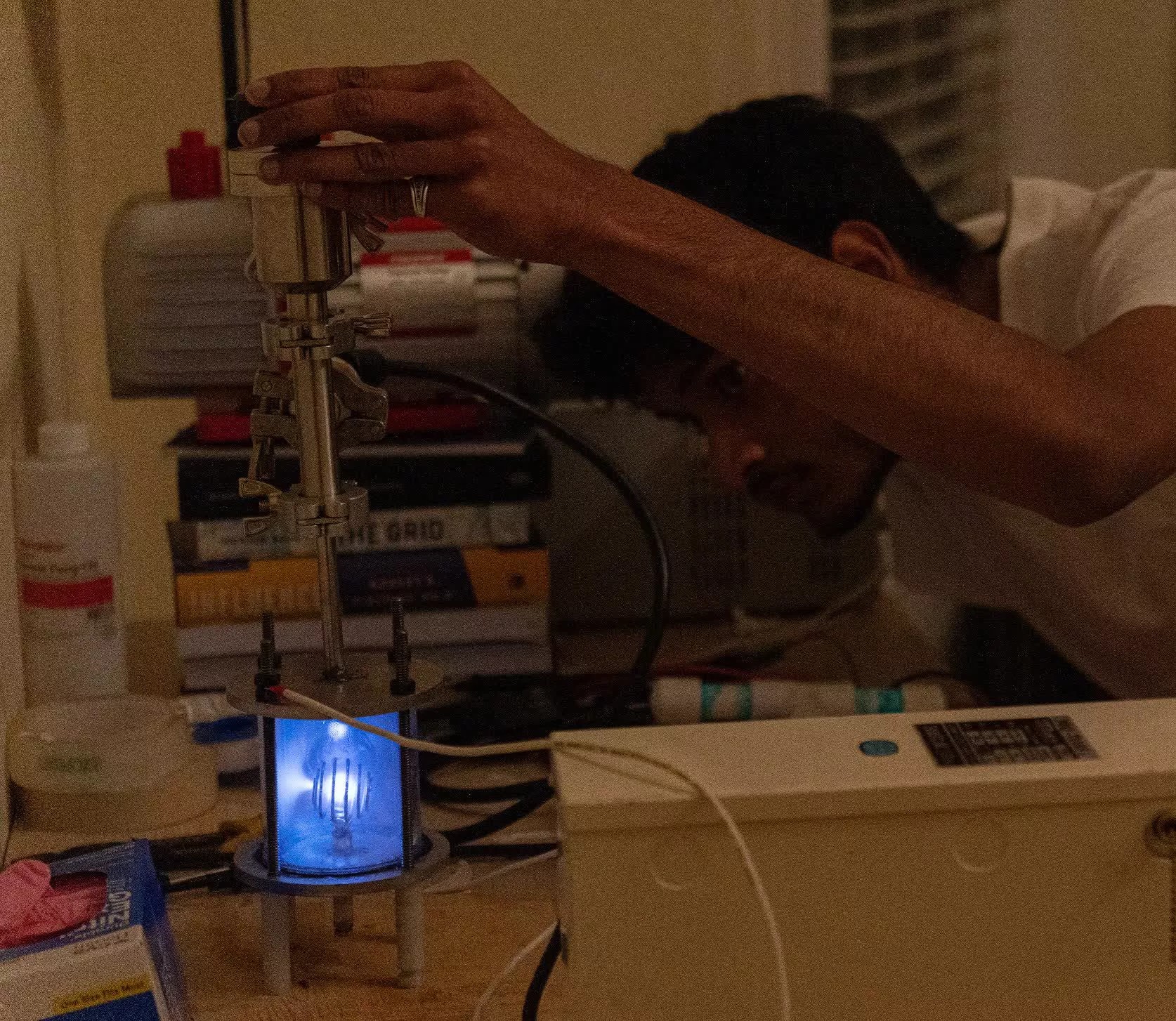
In a stunning display of ingenuity and determination, a University of Waterloo mathematics student has constructed a miniature fusion reactor in his bedroom, achieving plasma in just four weeks. Hudhayfa Nazoordeen, with no prior hardware experience, managed this feat using only $2,000 worth of off-the-shelf components and guidance from an AI assistant.
From Concept to Plasma in 28 Days
Nazoordeen's journey began with careful planning and sourcing of parts from suppliers like McMaster-Carr. He then tackled the assembly of the main chamber and rectifier circuit. By the third week, the reactor was set up in his bedroom, powered by a modest 12kV neon sign transformer.
The most challenging aspect proved to be creating a proper vacuum environment, critical for fusion reactions. Nazoordeen spent days hunting down and sealing tiny leaks to achieve a vacuum of 25 millionths of an atmosphere. He used an MKS-901p transducer to monitor and control the vacuum continuously.
AI: The Unexpected Lab Partner
Throughout the project, Nazoordeen relied heavily on Anthropic's Claude 3.5 AI chatbot. He fed the AI system datasheets and technical information, receiving invaluable assistance in interpreting complex data and guiding his efforts. This collaboration between human ingenuity and artificial intelligence highlights the potential for AI to accelerate scientific progress.
A Step Towards DIY Fusion
While Nazoordeen's reactor successfully produced plasma, it has not yet achieved full fusion. However, his work has inspired others in the DIY science community. Olivia Li, an engineer developing her own fusion reactor in a New York City apartment, praised Nazoordeen's achievement, noting that he was one of the few to move beyond talk and actually execute a fusion project.
The Future of Fusion at Home
Nazoordeen's project demonstrates the democratization of complex scientific endeavors. With the right combination of determination, resourcefulness, and AI assistance, ambitious experiments once reserved for well-funded laboratories are now within reach of passionate individuals.
While full fusion remains an elusive goal, Nazoordeen's work represents a significant step forward in making fusion research accessible to a wider audience. As he awaits funding for a "full fusor," the scientific community watches with interest to see what this young innovator and others like him might achieve next.